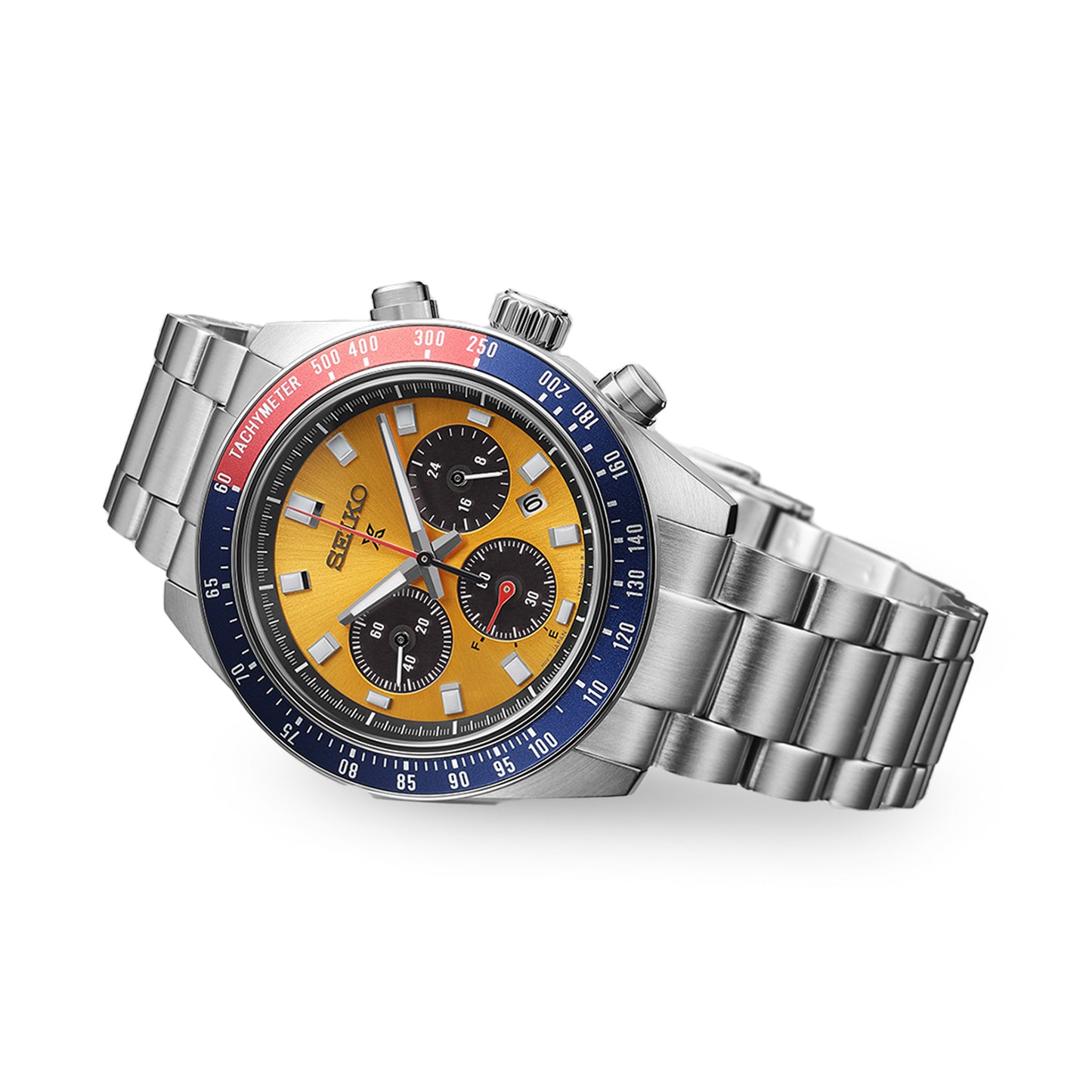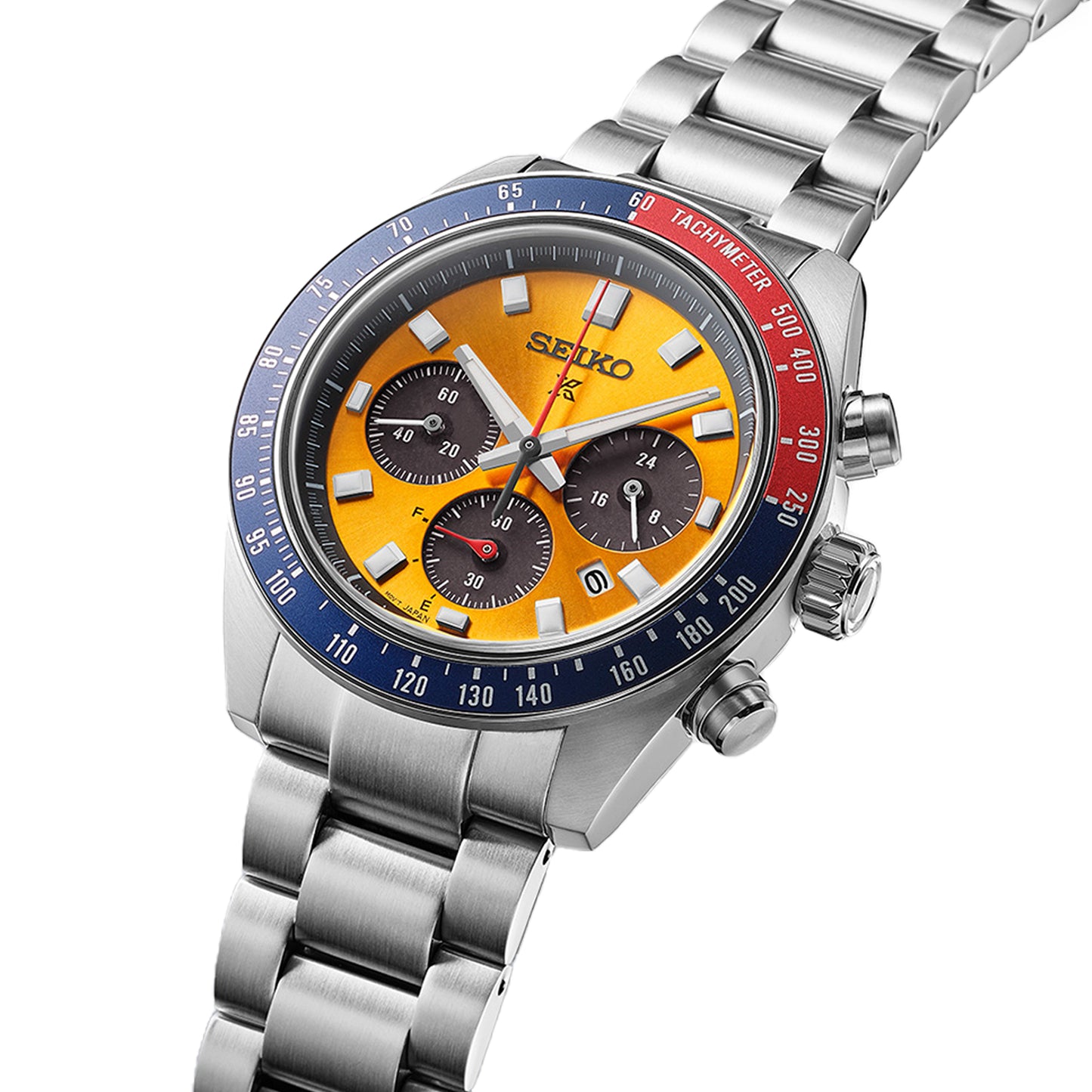Seiko SSC947 Speedtimer Pogue 1969 Re-Interpretation Watch
Seiko SSC947 Speedtimer Pogue 1969 Re-Interpretation Watch
An homage to a history-rewriting Seiko watch that was technically never sanctioned to leave our planet.
Couldn't load pickup availability
Editor’s Note
Watch-lovers and space nerds have quite a bit in common — an obsession with the moon, a keen sense for detail, and a real interest in the history of things. Both camps can recall dates, releases, launches, and firsts without much racking of the mind. So, when it broke that the first automatic chronograph watch to go to space during NASA's Skylab 4 mission to the first American space station was a Seiko, not a Sinn, no one took lightly that history was, well, being rewritten. Released in honor of said watch, the solar-powered Seiko SSC947 Speedtimer "Pogue" 1969 Re-Interpretation, named after the astronaut who wore it, Colonel William "Bill" Pogue, most parts components remain faithful to the original, with minimal updates for the modern market. With yellowy sunray dial, a blue and red outer tachymeter scale bezel, black triple-register subdial display (24-hour indicator, 60-minute totalizer, and a seconds counter), a date window at 4:30, a curved sapphire crystal, hairline brushing on the stainless case, smooth polishing on the multi-link stainless steel bracelet, it's quite a visual spectacle, and a rare feat of successful self-referential homage — just like jolting from Earth into outer space.
Details & Specs
- 41mm
- Stainless Steel
- Yellow Sunray Dial
- Tachymeter Bezel
- 6-Month Power Reserve
- Date Display
- Triple-Register Chronograph Subdial Display
- Solar Powered V192 Movement









